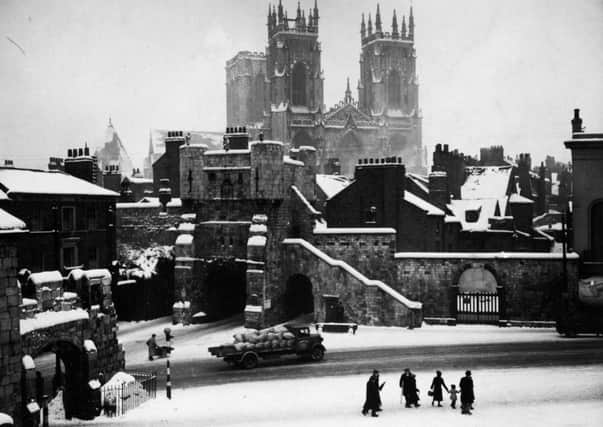When US drinkers raised a glass to end of Prohibition


CHRISTMAS came early for many people in the United States with the end of Prohibition on December 5.
When it first came into force in 1920, joyful campaigners, led by the influential Anti-Saloon League, smashed kegs and poured bottles down the drain. But far from ending corruption and vice, as opponents of the “demon rum” had hoped, Prohibition led to an unprecedented explosion in criminality and drunkenness.
Advertisement
Hide AdAdvertisement
Hide AdGangsters like Al Capone and Bugs Moran fought turf wars over the control of newly created bootlegging empires as the black market blossomed. But if the mood was one of merriment across the pond, in Europe there was definite unease. On December 15, the Yorkshire Post’s Madrid correspondent reported that “an atmosphere of nervous fear reigns in the Spanish capital” after a series of bombings in the city.
The violence was mirrored across the country with clashes between communists and anarchists following the right-wing government’s recent election victory, as Spain rolled inexorably towards civil war.
Events in Germany were also causing concern. At the start of the year Adolf Hitler and his Nazi Party weren’t even in power, yet now his government had been legally transformed into a de facto dictatorship. In August, Winston Churchill made his first speech warning of the dangers of German rearmament and, by mid-December, the Yorkshire Post felt compelled to write an editorial on the issue.
“There continue to be sharp contradictions between Herr Hitler’s pacific assertions and his Government’s actual practice,” it read. “At this moment no unprejudiced observer can feel confident regarding ultimate German aims and ambitions.”
Advertisement
Hide AdAdvertisement
Hide AdCloser to home, the Prince of Wales – the future Edward VIII – featured in the news when he made a pre-Christmas tour of Yorkshire. As well as opening Barnsley Town Hall, he visited unemployment centres and boys clubs in Huddersfield, Leeds, Rotherham and Sheffield.
The death of Sir Henry Fielding Dickens, the last surviving child of Charles Dickens, also made the news. It was reported that he died after being hit by a motorcycle just a few days before Christmas, the traditions of which his famous father had helped ingrain on the world.
By the early 1930s, Christmas was well on the way to becoming the commercial festival we recognise today. Tinsel and cheap decorations were now far more common and electric fairy lights were starting to appear, although most people still preferred candles.
For most, the festive season really started on Christmas Eve with the arrival of the tree and the family gathering to decorate it. Many went to church first thing on Christmas morning but after that the day was spent listening to the wireless, with the BBC putting great effort into its Yuletide celebrations. George V had made his first Christmas Broadcast to the Empire the year before and listening to the King’s Christmas Day speech quickly became a national habit.
Advertisement
Hide AdAdvertisement
Hide AdSo, too, was shopping and the Yorkshire Post’s “Shopping for Christmas” guide offered everything from home-made chutneys to fur coats, as well as offering readers advice on where to buy the best presents. “Whether you are prepared to spend 4s 11d, or £5,000 on a Christmas gift, James Street, in Harrogate, possesses shops which can meet your requirements.”
But for all its growing commercialism the festive season was still about helping others and the Yorkshire Post reported that The Bairns Christmas Fund, run by its sister paper, had raised more than £3,200. The money was used to buy boots and shoes for needy children in Leeds, as well as Christmas dinners for poor families all over the county.
Christmas, of course, is also a time to relax and unwind and a growing number of people flocked to picture houses to watch the early icons of the silver screen.
Hollywood’s golden age was now underway and this was the decade that saw stars like James Cagney, Clark Gable, Greta Garbo and Jean Harlow become household names. Musicals, too, were becoming increasingly popular and December 1933 saw the release of Flying Down to Rio. The film, starring Dolores del Rio and Gene Raymond, would have quickly slipped from memory had it not been for the fact that it paired two dancers together for the first time. Their names? Fred Astaire and Ginger Rogers.
On Monday it’s 1943 and the world is once again at war.